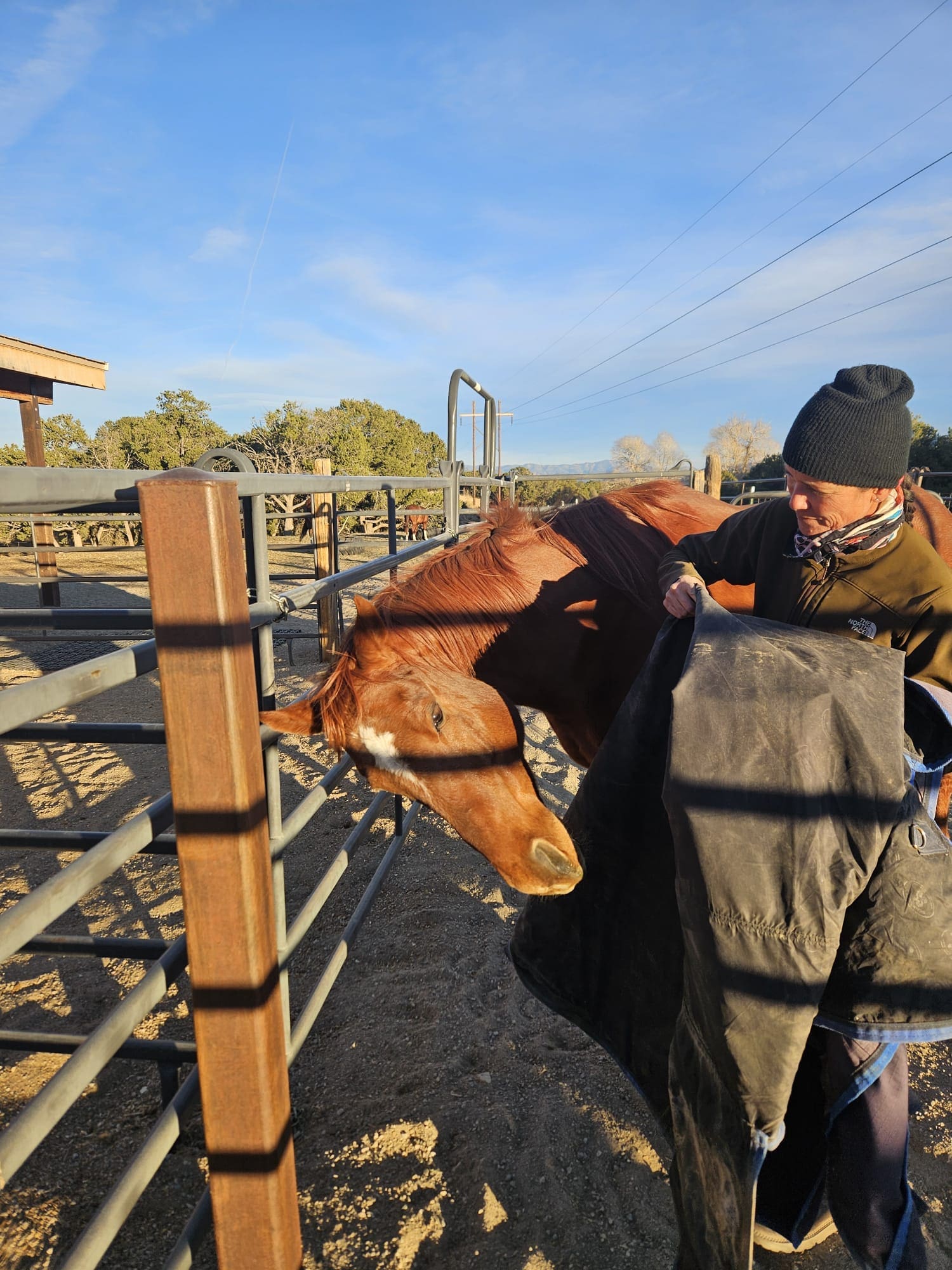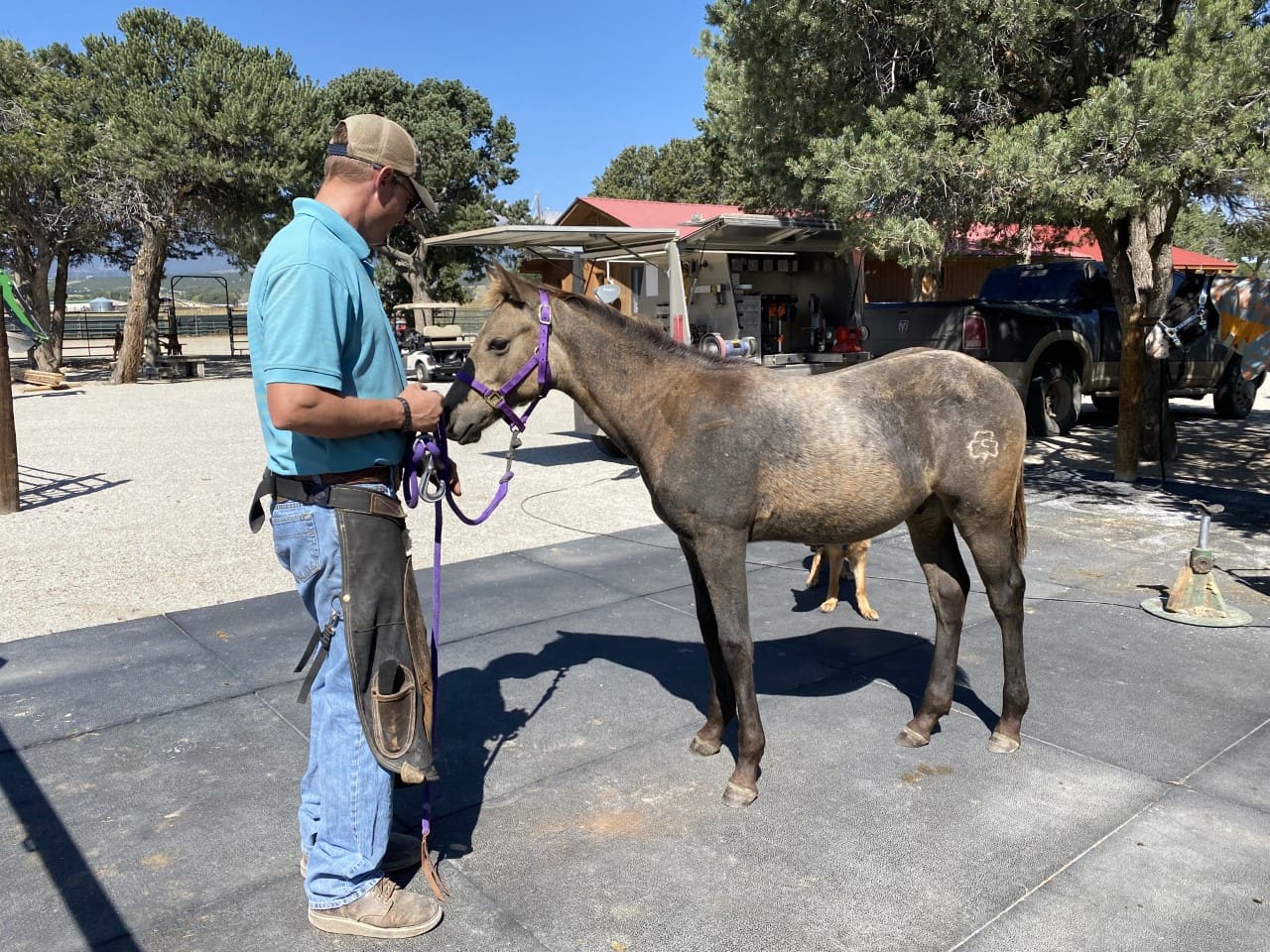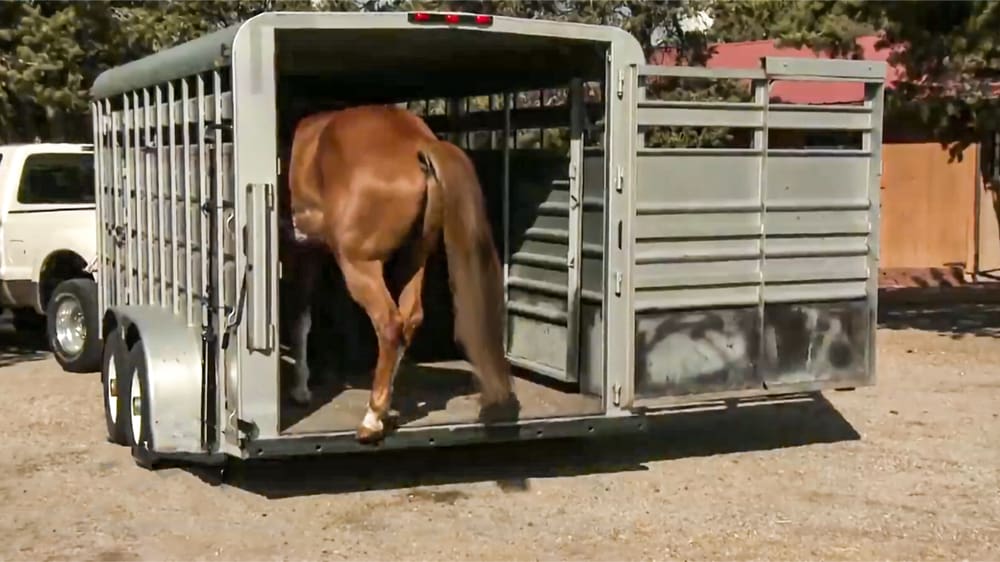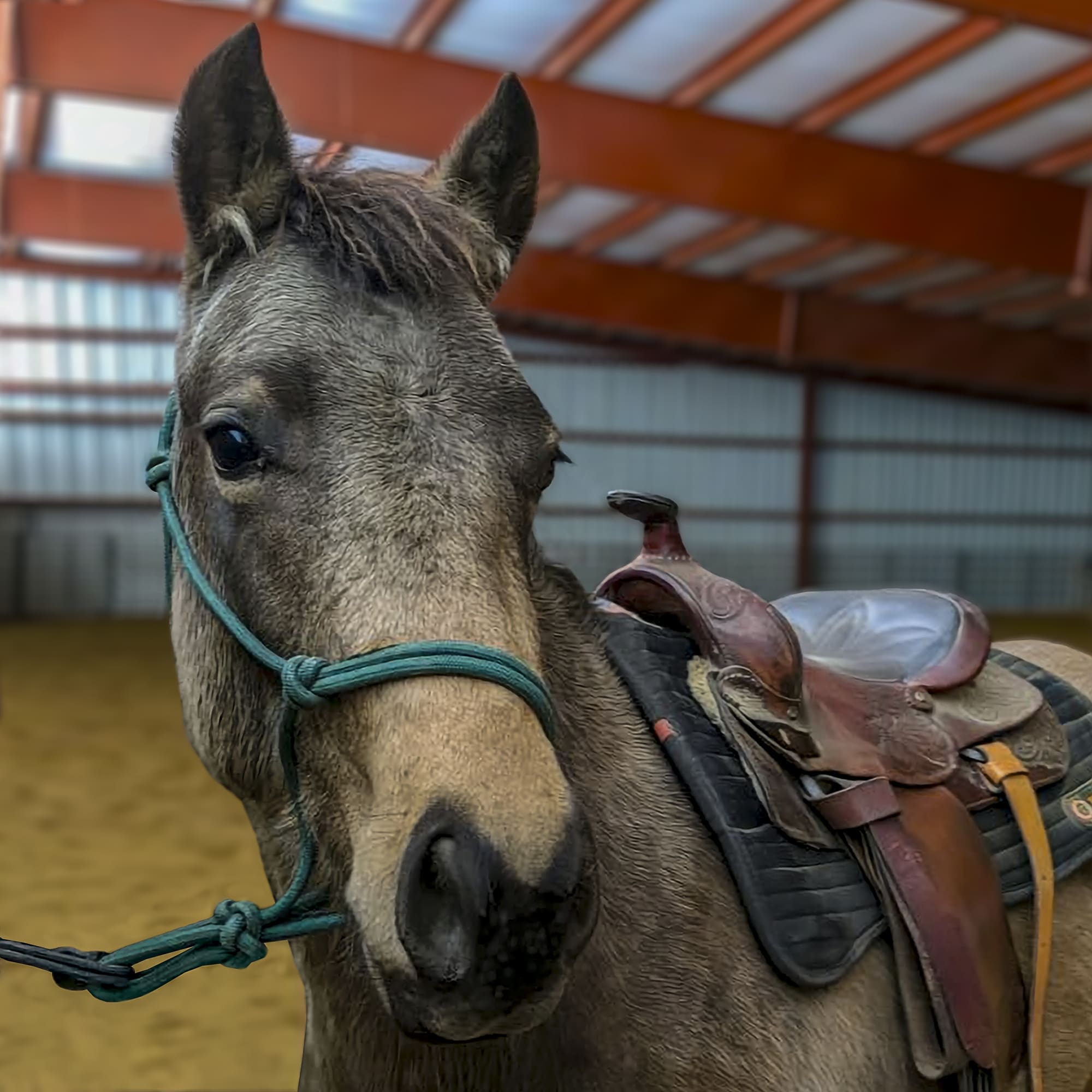
You’re raising a foal from a beloved mare.
You’ve been riding “made” horses for some time and are ready for a different challenge.
You’ve adopted a horse with an unknown history or a lot to learn.
You’re attending a horse sale to find your dream horse.
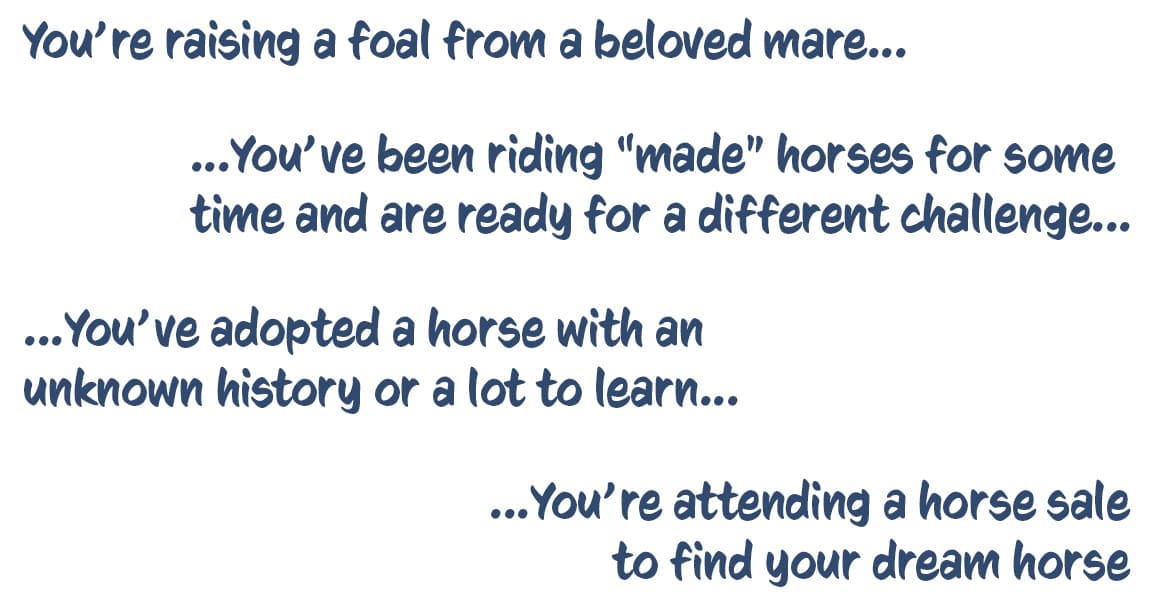
Performance Horses
When we talk about performance horse training, we are usually referring to a young horse who was bred for a certain competitive endeavor (like racing, cutting, jumping, reining, etc). These horses are at their greatest value and greatest potential between 2-5 years old, and their training is often dictated by date-driven competitions. Their under-saddle training will start early and move rapidly toward a singular goal within a particular time frame.
A young horse with a lot of performance training has probably only been handled solely by high-level professionals. They have very regimented daily training sessions and high expectations of their behavior. However, when these horses leave that highly structured environment, and end up in the hands of someone who is not experienced in handling young or green horses, their training can unravel fast.
Recreational Horses
On the other hand, young horses that are raised and trained for recreational riding are often brought along much slower than performance horses. Because of this, they may also have more well-rounded life skills. However, they may not have as much high-level training or as many discipline-specific skills as their performance-oriented peers, and their work ethic might not be as well-developed.
If you are looking into getting a young horse, it’s helpful to understand the general nature of what goes into their training, and what they are likely to know—or not know. While every horse is unique, I’ll go over some common differences between training the “typical” performance horse and recreational horse—from weanlings to 6-year-olds.
Weanlings & Yearlings
One of the scenarios that worries me most is when an inexperienced person gets a weanling so that they can “learn together.” This rarely goes smoothly, and often results in a young horse that has learned behaviors that will negatively impact its training later on. These include, but are certainly not limited to, moving into pressure, biting, lack of boundaries, and improper manners (none of which are the horse’s fault).
Horses under two years of age are just babies, and formal training should not be happening yet. Inexperienced owners of very young horses often become impatient and want to start saddling yearlings, or heaven-forbid, bridling them to “get them prepared” for under-saddle training.
This is potentially damaging to the baby horse, whose life should consist of frolicking in the field with other horses and just learning how to be a horse. Besides that, this early part of training goes very fast. It’s usually accomplished in minutes and hours, not days and weeks.
Starting training too early is unfair to the young horse, and usually comes with very negative results—physically and mentally. Because of this, most horse trainers prefer to train a 2- or 3-year-old horse with little handling over one that’s been over-handled or “prepared” by an inexperienced owner.
That being said, foals, weanlings and yearlings do need to have a few basic handling skills so they can be safely managed. They only need to be halter trained enough to be led to and from their playpen and/or to handle them in the event of sickness or injury. They do not need regular training sessions, to learn tricks, or to advance their skills.
As youngsters, performance horses are almost always allowed to be horses as weanlings and yearlings—life will get complicated soon enough. From birth to the fall of their yearling year, they will romp in the fields and be socialized by other horses. They generally are turned out with other horses of a similar age, and will have had minimal handling. Once they are old enough to begin under-saddle training, it goes fast—but they may start under-saddle training as early as long yearlings.
Weanlings and yearlings that are destined to become recreational mounts are sometimes the only youngsters around, are often penned with older horses, and might be handled more frequently. While their under-saddle training may start later, they often have more ground-handling than their performance peers at this age.
More handling comes with both pros and cons. Young horses raised as pets may be friendlier to people, but they are also more likely to learn bad habits like crowding, biting, or pulling away. They can also become desensitized to the point that it becomes difficult to teach them cues. One of the worst results of an over-handled youngster is when they develop a complete disregard of and/or disinterest in people.
On the other hand, with proper and limited handling, the young recreational horse is likely to learn only good habits. This sets them up to come into their under-saddle training ahead of their performance peers.

Raised with Manners - Foundational Training for Colts & Fillies
You only have one chance to raise your young horse right.
Training 2- and 3-Year-Olds
This is the “magic” age for under-saddle training. They have developed physically, and although their attention span is still short, it’s adequate for training. (However, it’s worth noting that there is a big difference in attention span between a 2- and 3-year-old.) Horses this age are still learning about their world at a rapid pace, and are highly impressionable. They are curious and eager to learn, and to them, riding has not become “work” yet.
Performance horses are often inserted into under-saddle training with very little groundwork or attention to manners. The general idea is to get a saddle on and get riding ASAP, with a singular focus on the skills that are needed to compete. Everything is done with the end-goal in mind. These horses advance rapidly in higher-level skills, but may not be well-rounded in basic life skills, like riding out in the open, trailering, standing properly for the farrier, and basic ground manners.
Young horses intended for recreational use have no deadlines. They usually are started under-saddle later than performance horses—either late in their 2-year-old year or as a 3-year-old. To me, a 3-year-old typically has more mental and physical stamina and its training will often proceed more rapidly than a horse that is started younger.
With the luxury of time, recreational horses are often more well-rounded in their training at this age—more groundwork, better manners, more cultivated experiences, and more fundamental skills like tying, standing still, trailering, and handling feet.
They may get broader exposure to different activities from arena to trail. But in terms of higher level skills or “finish” training, they are usually far behind their performance counterparts.
Working with 4- to 6-Year-Olds
Horses of this age have usually been started under-saddle and are “coming of age” in their intended careers. How much advanced training and worldly experience they possess may range from very little to world champion.
Performance horses of this age are often at the peak of their competitive careers. They have typically been with a professional trainer full time, except during layoff periods. They know a lot about their given discipline, and are at the top of their game.
They trailer well, perform in chaotic situations, and are well-acclimated to things like coliseums, heavy equipment, loud speakers, and bright lights. But outside an arena, they may not know much.
If the horse has been heavily campaigned, it’s been under a lot of mental and physical stress. This was the case with our newest horse, Tom. After we got him home, he benefited greatly from some rest and veterinary treatments to resolve his lingering soreness.
Horses that have been competing at a high level are entirely accustomed to a regimented work schedule. They are very fit, and used to confident and authoritative riders.
This is also the age where most performance horses will transition to non-pro riders—either in the same discipline, in a similar discipline that is less-demanding, or straight into life as a recreational horse. They may also be highly responsive (or over-reactive) to the smallest actions of the rider, and can be “too much horse” for a less-skilled rider. Often, we need to “de-tune” these horses to make them less reactive. This makes them more suitable for an intermediate rider.
Some horses make the switch from pro to non-pro riders better than others. Even though these horses possess a very high skill level (often higher than the skill of the non-pro rider that takes over), these horses are still quite immature and very green in many respects.
A highly trained horse may not tolerate the mistakes of an intermediate rider, and may get frustrated or impatient. Others that are used to more assertive riders may challenge the authority of a more passive rider, and quickly learn that compliance is optional with certain riders.
When this transition is properly managed, most well-trained performance horses will turn into good mounts for their non-pro riders. They will generally do better with experienced and confident riders who provide consistency in the horse’s training.

Be the Leader of Your Herd
As your horsemanship improves, so does your horse!
Recreational horses that are 4 to 6 years old can run the gamut from very experienced under saddle to still quite green. It depends entirely on the quantity and quality of its training. Being in training for 3 months, but only being ridden twice a week is not equal to a horse that’s been ridden 24 times over 30 days. Horses learn more efficiently and retain more when worked consistently, 5-6 days a week.
Remember, all horses are quick learners (for better or for worse). Young horses are learning to navigate their world and the people in it at an even more rapid pace. Horses learn wrong things just as quickly as the good things—sometimes faster.
It’s also not possible for a horse to have a higher skill level than the person who trained it. Professional and non-pro riders alike will make mistakes, but usually the more experienced person makes fewer mistakes. Many recreational horses get the benefit of an early start with a professional trainer who lays down a good foundation of training that is carried on by the owner.
Recreational horses that have been owner-trained from the start sometimes have holes in their foundational training. For example, they may not move freely forward, travel in a straight line, respond properly to bit pressure or leg cues, or may have learned it’s okay to break gait.
Similarly, horses that have only been ridden on the trail or ranch might be reliable and safe mounts at this age. They may also be lacking fundamental arena skills like canter leads, collection, bending, or body control.
I think it’s safe to assume that a recreational horse in this age bracket may not have as much finish-level training, but it may have more diverse life experiences. They also tend to be more fond of people, because their interactions with people and riding experiences have not been overly demanding. Instead, they have been fun and enriching.
Almost certainly, the recreational horse has not endured the physical and mental stressors that a young performance horse typically has.
When Does a Horse Mature?
For both performance and recreational horses, I think one of the biggest disconnects between young horses and their riders comes from a lack of understanding of a horse’s age, maturity, and stage of life. We don’t talk about a horse’s age like we do people, because it’s their year of life or stage of life that is more meaningful. For instance, a colt may only be 9 months old, but after January 1st, he’s in his “yearling” year, and that is a specific stage of life that comes with certain parameters.
A 4- or 5-year-old horse might have a significant amount of finish training and look mature. You can watch a professional rider put a young horse through its paces, and the horse seems push-button, almost robotic. But that horse may not have had significant life experiences and generalized its training to a variety of situations. It’s still highly dependent on the rider, who helps the horse do its job in significant, but subtle, ways that are invisible to the onlooker.
Horses are not fully mature until they are 7 to 8 years old. They are in their prime between 8 and 12 years old.
Again, these are generalities about young horses, and each individual should be judged on its own merits. Whether it’s intended for performance or recreation, when it comes to youngsters, one is not better than the other. They both have pros and cons.
It’s important for every rider to gain an understanding of the differences in how young horses are trained, and what each stage of life entails. This knowledge will help you know whether or not a horse is a good match for you, and whether or not you are ready for the challenges that come with riding young, green horses.

